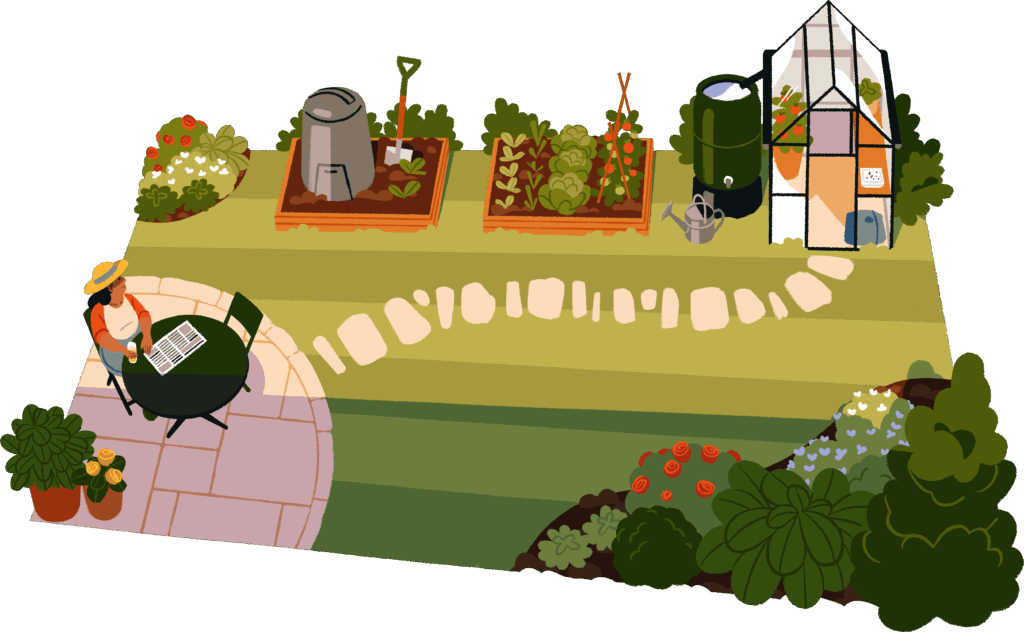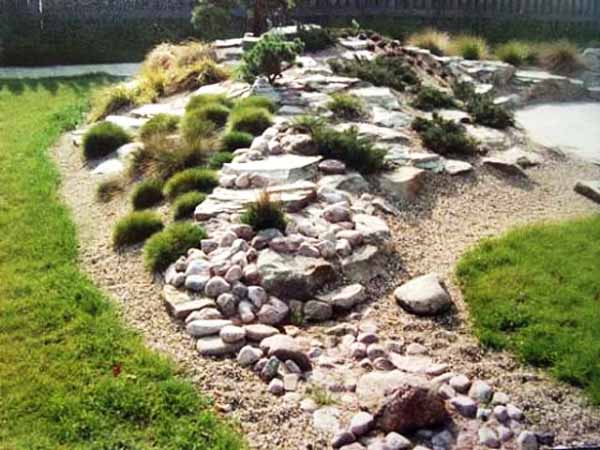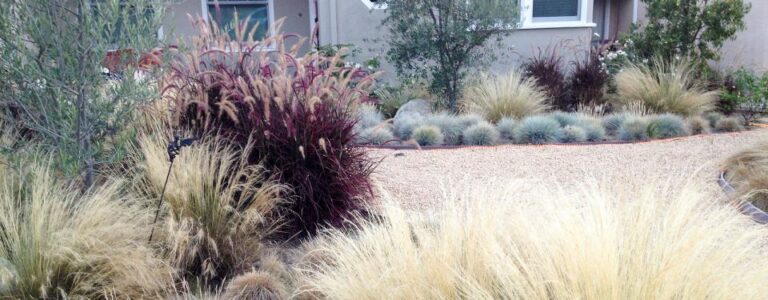
Embarking on a Greener Path: Understanding Sustainable Garden Design Certification
In an era where environmental consciousness is paramount, the concept of sustainable living has permeated various aspects of our lives, including the way we design and maintain our gardens. Sustainable garden design is more than just a trend; it’s a commitment to creating outdoor spaces that are environmentally responsible, ecologically sound, and aesthetically pleasing. It’s about working in harmony with nature, minimizing negative impacts, and fostering biodiversity. As interest in eco-friendly practices grows, so does the demand for qualified professionals who can guide homeowners and communities towards creating sustainable gardens. This is where sustainable garden design certification comes into play.
Sustainable garden design certification is a formal recognition of an individual’s expertise and knowledge in the principles and practices of sustainable landscaping. It demonstrates a professional’s commitment to environmentally sound design, water conservation, soil health, and responsible resource management. Achieving certification often involves completing a comprehensive training program, passing an examination, and demonstrating practical experience in the field. It’s a rigorous process that ensures certified professionals possess the skills and understanding necessary to create gardens that are both beautiful and beneficial to the environment.
But why is sustainable garden design certification so important? For starters, it provides credibility and assurance to clients seeking eco-friendly landscaping solutions. In a market saturated with self-proclaimed ‘green’ experts, certification offers a tangible way to distinguish qualified professionals from those who may lack the necessary expertise. It also helps to promote best practices within the industry, encouraging a higher standard of environmental responsibility among landscape designers and contractors.
Moreover, sustainable garden design certification can open doors to new career opportunities and professional advancement. As demand for sustainable landscaping services continues to grow, certified professionals are increasingly sought after by homeowners, businesses, and government agencies alike. Holding a recognized certification can give you a competitive edge in the job market and increase your earning potential.
The Core Principles of Sustainable Garden Design
Before diving into the specifics of certification programs, let’s take a closer look at the core principles that underpin sustainable garden design. These principles serve as the foundation for creating gardens that are not only beautiful but also environmentally responsible and ecologically sound.
1. Water Conservation
Water is a precious resource, and sustainable garden design prioritizes its efficient use. This involves implementing strategies such as:
- Xeriscaping: Selecting drought-tolerant plants that require minimal watering.
- Rainwater Harvesting: Collecting and storing rainwater for irrigation purposes.
- Efficient Irrigation Systems: Using drip irrigation or soaker hoses to deliver water directly to plant roots, minimizing water loss through evaporation.
- Soil Improvement: Enhancing soil’s water-holding capacity by adding organic matter such as compost and mulch.
2. Soil Health
Healthy soil is the foundation of a thriving garden ecosystem. Sustainable garden design emphasizes soil health through practices such as:
- Composting: Recycling organic waste into nutrient-rich compost to improve soil fertility and structure.
- Cover Cropping: Planting cover crops to prevent soil erosion, suppress weeds, and add organic matter to the soil.
- No-Till Gardening: Minimizing soil disturbance to preserve soil structure and beneficial microorganisms.
- Avoiding Synthetic Fertilizers and Pesticides: Using natural alternatives to nourish plants and control pests, minimizing harm to the environment.
3. Plant Selection
Choosing the right plants is crucial for creating a sustainable garden. This involves considering factors such as:
- Native Plants: Selecting plants that are native to the local region, as they are well-adapted to the climate and soil conditions and require minimal maintenance.
- Pollinator-Friendly Plants: Choosing plants that attract pollinators such as bees, butterflies, and hummingbirds, supporting biodiversity and ecosystem health.
- Drought-Tolerant Plants: Selecting plants that can thrive in dry conditions, reducing the need for irrigation.
- Avoiding Invasive Species: Avoiding plants that are known to be invasive, as they can outcompete native plants and disrupt ecosystems.
4. Resource Management
Sustainable garden design also focuses on responsible resource management, including:
- Using Recycled Materials: Incorporating recycled materials such as reclaimed wood, recycled plastic, and crushed glass into garden structures and pathways.
- Reducing Waste: Minimizing waste by composting yard waste, reusing containers, and avoiding single-use plastics.
- Conserving Energy: Using energy-efficient lighting and equipment, and designing gardens to maximize natural sunlight and ventilation.
- Sourcing Locally: Purchasing plants, materials, and services from local suppliers to reduce transportation emissions and support the local economy.
5. Habitat Creation
A sustainable garden should provide habitat for wildlife, supporting biodiversity and ecosystem health. This can be achieved by:
- Planting Trees and Shrubs: Providing food and shelter for birds, mammals, and insects.
- Creating Water Features: Adding ponds, bird baths, or other water features to provide drinking water and habitat for aquatic wildlife.
- Building Bug Hotels: Providing shelter for beneficial insects such as ladybugs and lacewings, which help control pests.
- Leaving Leaf Litter: Allowing leaf litter to accumulate in certain areas of the garden, providing habitat for overwintering insects and other wildlife.
Exploring Sustainable Garden Design Certification Programs
Now that we’ve covered the core principles of sustainable garden design, let’s explore some of the certification programs available to professionals seeking to enhance their knowledge and credibility in this field. Keep in mind that the availability and specific requirements of these programs may vary depending on your location.
1. Sustainable Sites Initiative (SITES)
SITES is a comprehensive rating system for sustainable land development and landscape design projects. While not strictly a certification for individuals, SITES provides a framework for evaluating the sustainability of landscape projects and recognizing professionals who have expertise in sustainable site design. Professionals can become SITES Accredited Professionals (SITES APs) by passing an exam that demonstrates their knowledge of the SITES rating system and sustainable landscape practices.
SITES APs are qualified to participate in the design, development, and implementation of SITES-certified projects. They play a crucial role in ensuring that landscape projects meet the rigorous sustainability standards set by the SITES rating system. The SITES AP credential is widely recognized and respected within the landscape architecture and design community.
2. Ecological Landscape Professional Accreditation (ELP)
The Ecological Landscape Alliance (ELA) offers the Ecological Landscape Professional Accreditation (ELP), which recognizes professionals who demonstrate a deep understanding of ecological principles and their application to landscape design and management. The ELP program involves completing a series of courses and passing an exam that covers topics such as soil health, water conservation, plant selection, and integrated pest management.
ELP accreditation demonstrates a professional’s commitment to creating landscapes that are ecologically sound, environmentally responsible, and aesthetically pleasing. ELPs are qualified to design, install, and maintain landscapes that support biodiversity, conserve resources, and minimize negative impacts on the environment. This accreditation is highly valued by clients who are seeking eco-friendly landscaping solutions.
3. Bay-Wise Certification
The Bay-Wise program, offered by the University of Maryland Extension, focuses on promoting sustainable landscaping practices that protect the Chesapeake Bay. While primarily targeted at homeowners, the Bay-Wise program also offers training and certification for landscape professionals who want to become Bay-Wise experts. Certified Bay-Wise professionals are trained to assess landscapes and provide recommendations for implementing sustainable practices that reduce pollution and conserve water.
The Bay-Wise certification is particularly relevant for professionals working in the Chesapeake Bay watershed, as it demonstrates their commitment to protecting this valuable ecosystem. Certified Bay-Wise professionals are equipped with the knowledge and skills necessary to design and maintain landscapes that are both beautiful and environmentally responsible.
4. LEED (Leadership in Energy and Environmental Design)
While LEED is primarily known as a green building certification program, it also includes aspects related to sustainable site design and landscaping. Landscape professionals can contribute to LEED-certified projects by implementing sustainable landscaping practices that earn credits under the LEED rating system. While there isn’t a specific LEED certification for landscape professionals, having experience with LEED projects can be a valuable asset for those seeking to work on sustainable landscape projects.
LEED promotes sustainable site design principles such as reducing the heat island effect, conserving water, and promoting biodiversity. Landscape professionals who are familiar with LEED requirements can play a key role in helping projects achieve LEED certification. This experience can enhance their credibility and open doors to new opportunities in the green building industry.
5. Local and Regional Certifications
In addition to the national and international certification programs mentioned above, there may also be local or regional certifications available in your area. These certifications often focus on specific environmental issues or landscaping practices that are relevant to the local climate and ecosystem. Contact your local extension office, botanical garden, or professional landscaping association to learn about certification opportunities in your region.
The Benefits of Sustainable Garden Design Certification
Investing in sustainable garden design certification can offer a multitude of benefits for both professionals and their clients. Let’s explore some of the key advantages:
1. Enhanced Credibility and Trust
Certification provides a tangible demonstration of your expertise and commitment to sustainable landscaping practices. It assures clients that you have the knowledge and skills necessary to create gardens that are both beautiful and environmentally responsible. This can help you build trust with clients and differentiate yourself from competitors who may lack formal training or certification.
2. Increased Marketability and Earning Potential
As demand for sustainable landscaping services continues to grow, certified professionals are increasingly sought after by homeowners, businesses, and government agencies. Holding a recognized certification can give you a competitive edge in the job market and increase your earning potential. Clients are often willing to pay a premium for the services of certified professionals who can deliver high-quality, sustainable landscaping solutions.
3. Expanded Knowledge and Skills
Pursuing certification requires completing a comprehensive training program and demonstrating practical experience in the field. This process can significantly expand your knowledge and skills in areas such as soil health, water conservation, plant selection, and integrated pest management. You’ll gain a deeper understanding of ecological principles and how to apply them to landscape design and management.
4. Networking Opportunities
Certification programs often provide opportunities to network with other professionals in the field, attend conferences and workshops, and stay up-to-date on the latest trends and technologies in sustainable landscaping. These networking opportunities can help you build relationships with potential clients, collaborators, and mentors, and advance your career in the industry.
5. Contribution to Environmental Stewardship
By becoming a certified sustainable garden designer, you’re not only advancing your career but also contributing to environmental stewardship. You’ll be equipped with the knowledge and skills necessary to create gardens that conserve resources, protect biodiversity, and minimize negative impacts on the environment. You’ll be playing a vital role in promoting sustainable landscaping practices and creating a healthier planet for future generations.
Choosing the Right Certification Program
With a variety of sustainable garden design certification programs available, it’s important to choose the one that best aligns with your career goals and interests. Consider the following factors when making your decision:
1. Your Area of Focus
Some certification programs focus on specific aspects of sustainable landscaping, such as water conservation, soil health, or native plant selection. Choose a program that aligns with your area of expertise and the types of projects you’re most interested in working on.
2. Your Geographic Location
Some certification programs are specific to certain regions or ecosystems. If you plan to work primarily in a particular area, consider a certification program that is relevant to that region’s climate and environmental challenges.
3. Your Career Goals
Consider your long-term career goals and choose a certification program that will help you achieve them. If you’re aiming to work on large-scale commercial or government projects, a certification like SITES AP may be more valuable. If you’re primarily interested in residential landscaping, a certification like ELP or Bay-Wise may be a better fit.
4. The Program’s Reputation and Recognition
Research the reputation and recognition of the certification program within the industry. Look for programs that are accredited by reputable organizations and widely recognized by employers and clients.
5. The Program’s Cost and Time Commitment
Consider the cost of the certification program, including tuition fees, exam fees, and continuing education requirements. Also, factor in the time commitment required to complete the program, including coursework, studying, and practical experience.
The Future of Sustainable Garden Design
Sustainable garden design is not just a passing fad; it’s a fundamental shift in the way we approach landscaping. As environmental awareness continues to grow, the demand for sustainable landscaping services will only increase. This presents exciting opportunities for professionals who are passionate about creating gardens that are both beautiful and beneficial to the environment.
The future of sustainable garden design will likely be shaped by several key trends, including:
1. Increased Use of Technology
Technology will play an increasingly important role in sustainable garden design, with tools such as smart irrigation systems, soil sensors, and drone-based monitoring becoming more prevalent. These technologies can help optimize resource use, improve plant health, and reduce maintenance costs.
2. Greater Emphasis on Biodiversity
Creating habitats for wildlife will become an even greater priority in sustainable garden design. This will involve incorporating a wider variety of native plants, creating water features, and providing shelter for birds, mammals, and insects.
3. Focus on Climate Resilience
As climate change continues to impact our environment, sustainable garden design will need to focus on creating landscapes that are resilient to extreme weather events such as droughts, floods, and heat waves. This will involve selecting plants that are adapted to changing climate conditions, improving soil drainage, and implementing water conservation strategies.
4. Integration of Food Production
Growing food in gardens and landscapes will become more common, as people seek to reduce their carbon footprint, improve their health, and connect with nature. Sustainable garden design will need to incorporate edible plants, raised beds, and other features that support food production.
5. Community Engagement
Sustainable garden design will increasingly involve community engagement, with residents participating in the design, installation, and maintenance of gardens and landscapes. This can help foster a sense of ownership and responsibility, and promote environmental stewardship within the community.
Conclusion
Sustainable garden design certification is a valuable investment for professionals who are passionate about creating gardens that are both beautiful and environmentally responsible. It provides enhanced credibility, increased marketability, expanded knowledge, and networking opportunities. By becoming a certified sustainable garden designer, you can play a vital role in promoting sustainable landscaping practices and creating a healthier planet for future generations. As the demand for sustainable landscaping services continues to grow, certified professionals will be well-positioned to thrive in this exciting and rewarding field. So, take the first step towards a greener future and explore the sustainable garden design certification programs available to you today!


